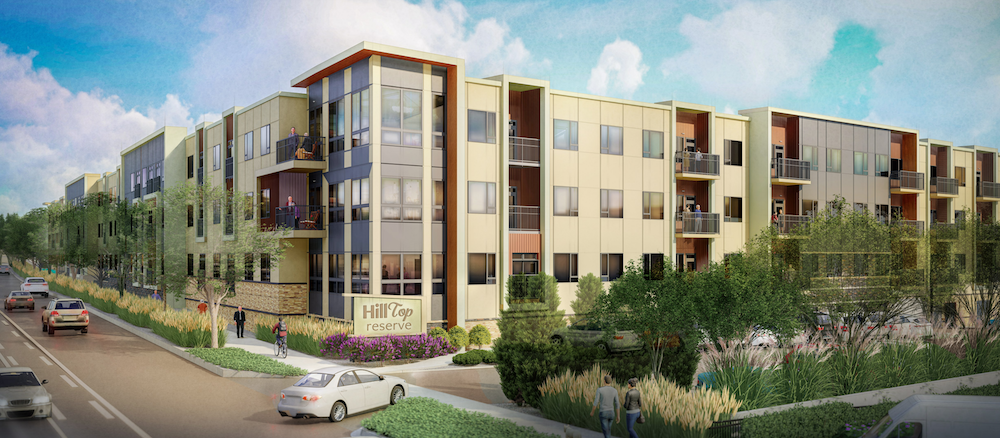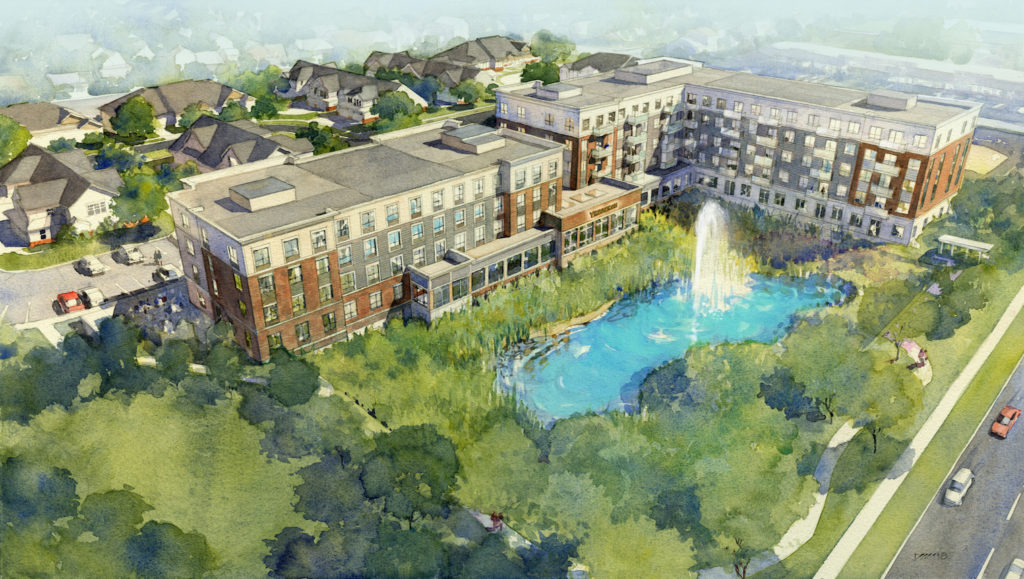Senior housing is not a one size fits all business, and there is a wide opening for developers to create communities specifically tailored for underserved groups.
Some providers are cognizant of the opportunity to serve niche markets and are adapting their operations to meet demand. Others are building new communities to bring care and services where particular demographics reside.
But while these developers see big upside, they are also breaking new ground, with few previous examples to draw from in creating a development thesis.
The developers of two projects – one serving Denver’s aging Jewish community, and another in the Chicago suburbs serving older adults of Indian and South Asian descent – shared their insights and strategies during Senior Housing News’ BUILD Conference, which was held in a virtual setting this year.
“There is a gap in the market and these kinds of communities fills that gap,” said Dr. Anuja Gupta, principal and managing partner of Aman Living.
Contributing to the community
Both projects were born out of a need to serve the growing demand for aging seniors within their demographics, and to facilitate access to health care as they age.
Aman is developing Verandah Senior Living, a $43 million community in Hanover Park, Illinois, which includes 51 townhomes and 75 condominiums for independent living, an 82-bed assisted living and memory care facility, skilled nursing and a rehabilitation center. The community will be managed by Journey Senior Living, an operator based in Bourbonnais, Illinois.
Aman previously built a standard senior housing community and, after that campus opened, people reached out to Gupta and suggested that a customized community for seniors of Indian and South Asian descent would be ideal for the area.
“Chicago has the second largest population of South Asians after the New York/New Jersey area, and there were no customized options available for their retirement,” she said.
Targeting a niche population with senior housing is a way to foster and strengthen the ties within, Focus Property Group Executive Vice President Josh Fine said. Headquartered in Denver, Focus is developing Hilltop Reserve, a $97 million, 205-unit community in that city’s Hilltop neighborhood. The site falls within the East Denver Eruv – an area of land where Jewish people are allowed to perform activities on the Sabbath they would otherwise be forbidden, such as carrying babies, pushing strollers and using canes.
 Hilltop Reserve, courtesy Focus Property Group
Hilltop Reserve, courtesy Focus Property GroupFocus is partnering with Ascent Living Communities, an owner and operator based in Centennial, Colorado, on the project. One of the principals at Ascent is a practicing Reform Jew, and Fine is Orthodox. Both see Hilltop Reserve serving a need in Denver’s greater Jewish community. The Sabbath, which runs from Friday evening through Saturday evening, is a time for families to congregate, have large meals, and relax while honoring religious customs.
Fine believes the community will attract outsized interest from within and outside the area, which can set it up for a future competitive advantage. Jewish seniors living outside the eruv either need relatives to pick them up to congregate during the Sabbath, or observe the Sabbath alone. Hilltop Village’s proximity to Denver’s larger Jewish community creates continuity and connection.
“It enables us to offer something to the community that doesn’t exist, that will really improve the quality of lives and enable families to stay together,” Fine said.
Hilltop Reserve is not being marketed exclusively to Jewish seniors, and Fine believes there is an opportunity for the community to extend its reach beyond the niche market and connect a range of communities, given the unique aspect of what is happening within the building.
“To be able to allow people to have those memories is a great contribution to the community,” he said.
Senior housing for niche markets can serve as a bridge between communities that need health care and extending quality of life.
A cardiologist by trade, Gupta was the medical director of an assisted living facility before transitioning to real estate. One day, the owner of the facility asked her where do South Asian seniors go when they are no longer able to live independently, as he had never seen one in any of his facilities.
That anecdote planted the seed for Verandah.
“That got me thinking, ‘Where do our people go when they seek this kind of care?’” she said. “The incidence of conditions that need assisted living is the same in South Asians and Indian people, as it is in all other people.”
Further research, and conversations with South Asian seniors, led to the discovery that they do not seek out senior living options. Traditional assisted living communities are tailored to provide a mostly uniform experience – activities, entertainment, dining and staffing do not take a diverse census into consideration. As a result, South Asian seniors tend to age at home, with help from families and private home health care. This has downsides, as well. If a senior’s condition deteriorates, the degree of rehabilitation in a post-actute setting is much higher, and their conditions deteriorate at faster rates than if they were in a proper long-term care setting.
“They end up receiving compromised care,” Gupta said.
She originally conceived Verandah as a setting for assisted living, memory care and skilled nursing. As the concept evolved, however, it grew to include independent living. The campus site allowed Aman to serve a dense population of South Asian seniors, with a full range of care levels.
Verandah’s independent living segment is now online. The assisted living component is under construction, and Gupta receives calls daily from families inquiring about availability.
Risks and complexities
The price tags for Verandah and Hilltop Reserve are in line with many market rate communities currently under construction or under development. But they do come with an elevated degree of risk, due to the niche demographics each aims to serve.
Gupta is confident that Verandah can meet the demand for senior living among South Asian seniors, but there is limited objective market data supporting her thesis. So she is moving forward based on her own research, which has mostly come from conversations with the parents of friends and extended family.
Those conversations have mostly ended with people telling her that Indian and South Asian seniors do not transition to senior living. Verandah is as much a leap of faith as it is filling a void in the industry.
“They’re definitely more risky,” she said.
Furthermore, serving niche groups comes with certain operational complexities and costs that a standard senior living project would not contend with.
Hilltop Reserve’s amenities at first glance may appear no different from what one would expect of other retirement communities. As a community that is marketed to a broader customer base, Focus is considering the total resident population versus the Jewish seniors expected to be the community’s foundation. But, the project stakeholders have carefully considered how to make Jewish residents feel at home.
For example, Kosher food is typically prepared with special ingredients in a separate kitchen, under supervision of a mashgiach – a rabbi or other official who ensures the food is prepared under kosher guidelines. Hilltop Reserve opted to not have a kosher kitchen, because the cost would be prohibitive for a small segment of the overall population, Fine said.
Because the community is located within the boundaries of the eruv, however, Jewish residents have access to a kosher supermarket and a couple kosher restaurants within walking distance. Focus and Ascent are also establishing a program through which fresh, freshly prepared kosher food is available for the residents who want it.
In another example, observant Jews who do not use electricity during the Sabbath will be able to access their units and the community with metal key overrides, instead of using their electronic keys. These and other considerations are negligible expenses, but show that the developer and operator are cognizant of the needs of its Jewish residents, and willing to make their lives a little bit easier.
“It’s not really an additional expense. It’s more being sensitive to understanding the needs of the community,” Fine said. “A lot of those things are going to be invisible, that people that aren’t part of the community would never know.”
While niche communities are not commonplace within senior living, there are some successful examples, including projects from Aegis Living that serve many people of Chinese descent. But the coming years could see more such communities, particularly given demographic trends. As the United States has become more diverse as the population ages, a phenomenon referred to as the “browning of the graying of America” is occurring.
Already, other niche projects are underway in the Chicago area, Gupta noted, including some serving Polish, Latino and African American populations.
“They will be looking for specific customized options, just like anyone else,” she said. “It’s an idea which is coming of age right now.”
Companies featured in this article:
Aman Living, Ascent Living Communities, Focus Property Group, Journey Senior Living


